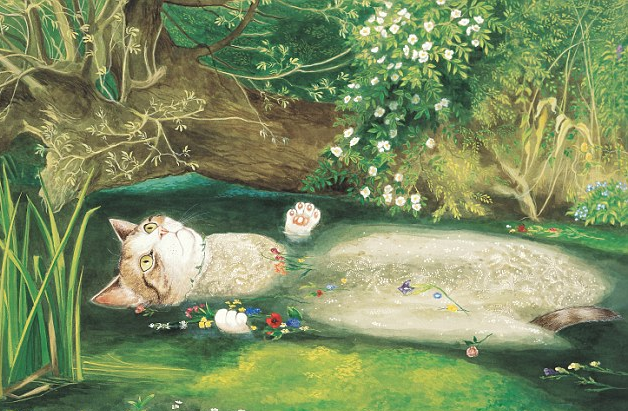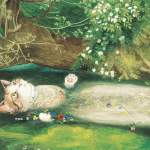http://collections.troutgallery.org/Obj18182?sid=59379&x=612537
The image that I chose is entitled the Fair Dreamer. The main subject of the image is a beautiful (fair) woman who appears to be asleep or is waking up as she is sprawled against the trunk of a willow tree. The setting is on the banks of a lake. There is also a parasol in one corner of the image and a rowboat in the other. What intrigues me the most about this image is the posture of the woman. She is stretching but in a way that looks exposing or inviting. Her arms are stretched above her with one lying across her forehead, her legs aren’t crossed, and her eyes are closed, possibly hinting that the body language of the woman could be interpreted as one of relaxation, fragility, or sexual desire. Her parasol, a tool that is used to shade/protect one’s self, also appears to have been tossed aside, which can imply that she is willingly giving off a sign of acceptance.
All of this reminded me of the readings that we covered in class that were about the female as a sexualized object. Elizabeth Lee’s article on the Victorian Web, the Femme Fatale as Object, discusses the fascination with the female body that many male artists of the Victorian Era felt. According to Jan Marsh, the femme fatale, a seductive and dangerous woman, became idealized to the point where they were “rendered decorative, depersonalized; they [became] passive figures rather than characters in a story or drama… women [were] reduced to an aesthetic arrangement of sexual parts, for male fantasies” (Lee 1). In short, male artists feared the “sexual destructiveness” of the femme fatale and thus began to view their female human models as perfect, sexually attractive objects with a lack of a real identity.
I think that Elizabeth Lee’s article can be connected to the Fair Dreamer because the women of this image is similar to a female model that a male artist from the Victorian Era would desire. As mentioned before, the body language of the woman is one of passiveness and sexuality. Though she is fully clothed, she is still beautiful with an inviting posture and a tranquil/gentle expression on her face. She is also asleep in nature, which further romanticizes the image and shows that she can be an example of a “femme fatale, whose dangerous sexual powers artists felt the need to reign in somehow to make her more palatable to Victorian audiences” (Lee 1). By making her asleep, the artist has successfully quelled her “threatening” side.



